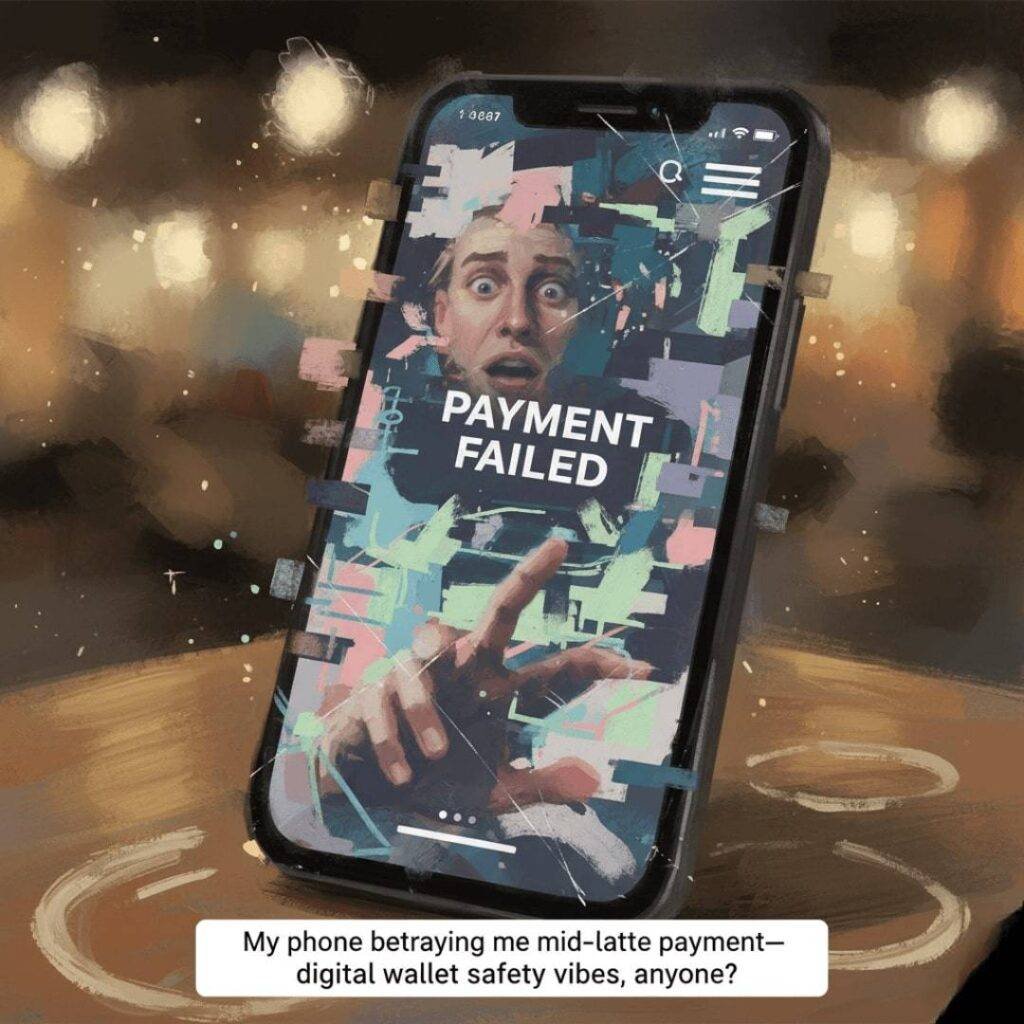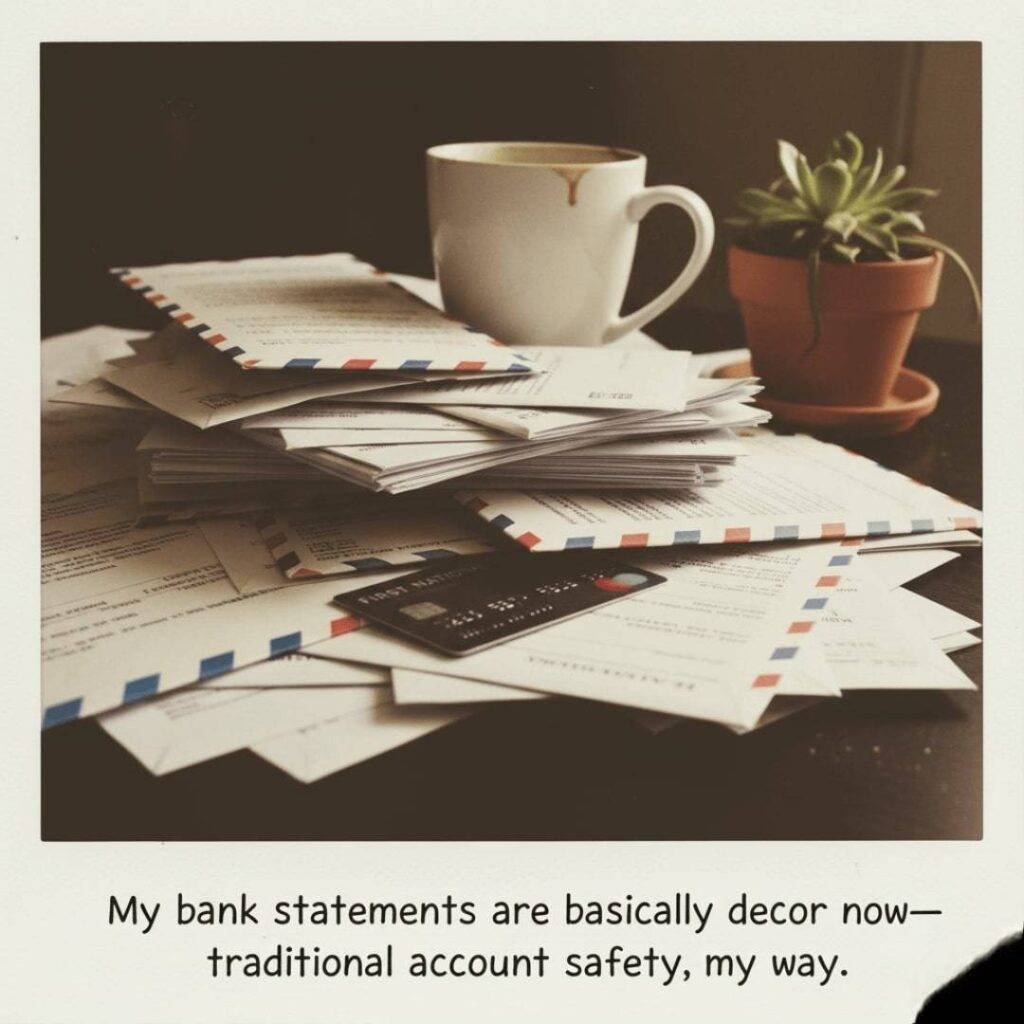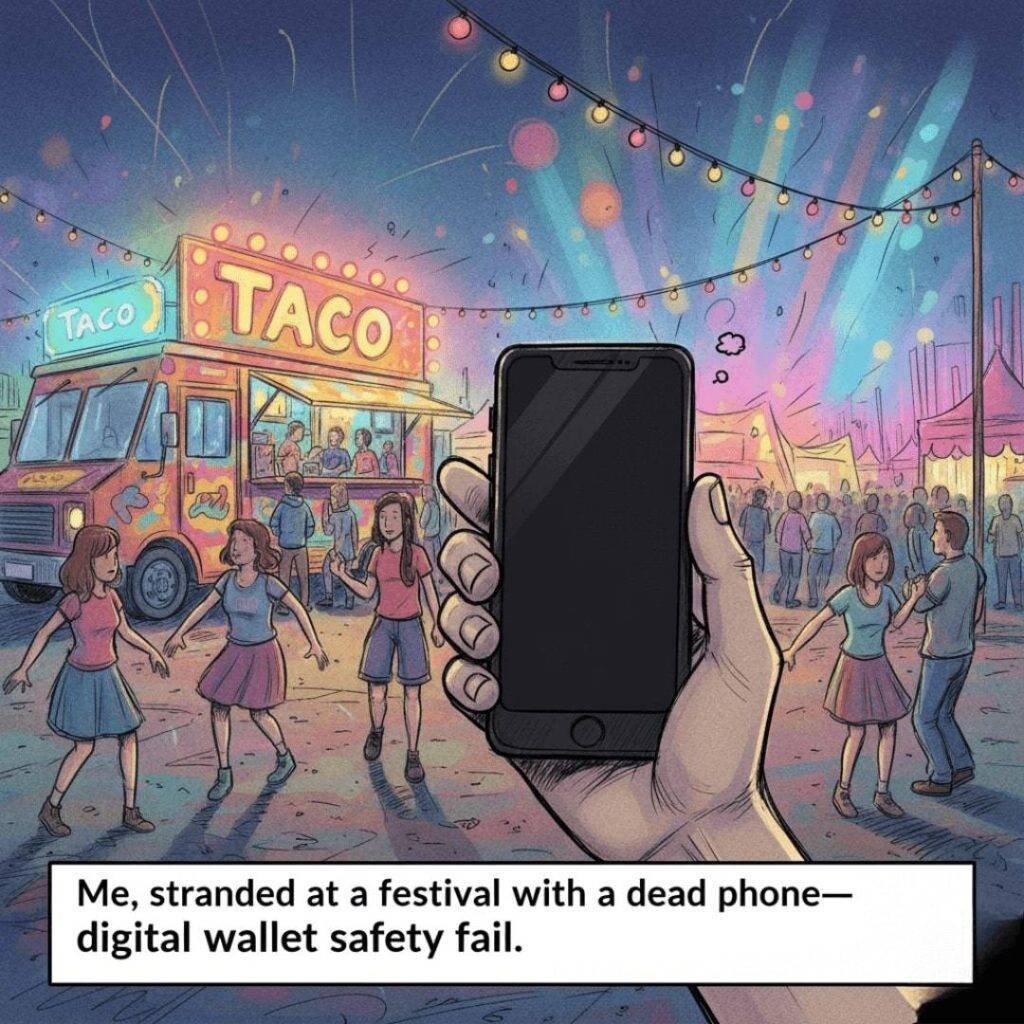My Messy Dive into Digital Wallet Safety
Okay, so digital wallet safety—it’s one of those things I’ve been obsessing over lately, especially since I nearly lost my mind last week in a Brooklyn coffee shop. Picture this: I’m fumbling with my phone, trying to pay for a $7 oat milk latte (don’t judge), and my digital wallet app freezes. Like, full-on bricked. My card’s buried in my bag, and I’m holding up the line, sweating, while the barista gives me that “hurry up, dude” look. That’s when I started wondering: are digital wallets actually safer than my trusty old bank account? I mean, I’m no tech genius, but I’ve got stories, and I’m gonna spill ‘em.
I’m sitting here in my tiny apartment, the radiator hissing like it’s auditioning for a horror movie, and I’m thinking about how I’ve been using digital wallets like Venmo and Apple Pay for everything—groceries, Ubers, even splitting rent with my roommate. But every time I tap my phone to pay, there’s this tiny voice in my head going, “What if someone hacks this thing?” Traditional bank accounts, though? They feel like that old, clunky safe my grandpa kept in his basement—boring but solid. So, which one’s really safer? Let’s break it down, me-style, with all my screw-ups and paranoia included.
Why Digital Wallets Feel Like the Future (But Also Kinda Sketchy)
Digital wallets are, like, everywhere now. I mean, I was at a bodega yesterday, and the guy behind the counter was like, “Yo, just tap your phone, we don’t do cash.” It’s wild how fast we’ve ditched paper money. But here’s the deal with digital wallet safety: they’re super convenient, but that convenience comes with a side of “oh crap, what if this goes wrong?”
Here’s what I’ve learned (mostly the hard way):
- Encryption is legit. Digital wallets like Apple Pay use tokenization, which is a fancy way of saying your card number gets scrambled into a code nobody can read. I read up on this on NerdWallet, and it’s like your money’s wearing an invisibility cloak.
- Biometrics are cool but not perfect. My phone’s Face ID feels like I’m in a sci-fi movie, but last month, I tried unlocking it with my glasses fogged up from the subway, and it was like, “Nah, you’re not you.” Annoying, but it’s a digital wallet safety win, right?
- Hacks happen. I had a buddy who got his Venmo drained because he used the same password as his old MySpace account (yep, he’s that guy). According to Forbes, weak passwords are the biggest weak spot.

Traditional Accounts: Old-School but Not Bulletproof
Now, let’s talk traditional bank accounts. I’ve got this checking account with a local credit union, and it feels like the financial equivalent of my mom’s meatloaf—reliable, but not exactly thrilling. I used to think bank accounts were untouchable, but then I got hit with a $200 overdraft fee because I forgot about a subscription (don’t ask—it was for a yoga app I used once). So, how do traditional accounts stack up for safety?
- FDIC insurance is a big deal. If my bank goes kaput, I’m covered up to $250,000, which is more than I’ll ever have, let’s be real. The FDIC’s site spells this out, and it’s like a warm hug for my anxiety.
- Fraud’s still a thing. My cousin got her debit card skimmed at a shady gas station, and it took weeks to get her money back. Digital wallets don’t usually have that lag, which is a point in their favor.
- Paper statements are a pain. I’m staring at a pile of unopened bank statements on my desk right now, and I swear they’re judging me. Digital wallets don’t send you mail you ignore, so that’s a win.

Digital Wallet Safety vs. Bank Account Security: My Hot Mess of a Comparison
Alright, here’s where I get real. I’m no expert, but I’ve had enough close calls to have opinions. Digital wallet safety feels like a shiny new toy—fast, sleek, but you’re always wondering if it’s gonna break. Like, last summer, I was at a music festival, and my phone died right when I needed to pay for a taco. No cash, no backup card, just me looking like a fool. Traditional accounts? They’re like my ancient couch—ugly, but I know it’s not going anywhere.
Here’s my totally biased breakdown:
- Speed: Digital wallets win. Tap and go, baby. Bank accounts make you dig for your card like you’re on an archaeological expedition.
- Hacking Risk: It’s a toss-up. Digital wallets have fancy encryption, but one dumb password and you’re toast. Banks get hit too—Bankrate says fraud’s up 20% this year.
- Ease of Recovery: Banks are slower but have that FDIC safety net. Digital wallets? If you lose your phone, good luck. I almost cried when I thought I left mine on the subway last week.

My Tips for Staying Safe (Learned the Hard Way)
Look, I’m no financial guru, but I’ve made enough mistakes to share some digital wallet safety tips:
- Mix it up. Use a digital wallet for small stuff, but keep a traditional account for big payments. I learned this after overspending on Venmo during a bar crawl.
- Lock it down. Use strong passwords and biometrics. I started doing this after my buddy’s Venmo fiasco.
- Check your apps. Those little “connected accounts” in your digital wallet? Review ‘em. I found a sketchy app linked to my PayPal from 2019—yikes.
- Have a backup. I now carry one emergency card after the taco truck disaster. Cash works too, if you’re feeling retro.
Wrapping Up This Digital Wallet Safety Rant
So, digital wallets vs. traditional accounts? Honestly, I’m torn. Digital wallet safety is tight with all that encryption, but one glitch and you’re screwed. Traditional accounts feel safer but come with their own headaches. I’m sitting here, sipping lukewarm coffee, staring at my phone and my bank statements, and I’m like, “Can’t I just stuff cash under my mattress?” Anyway, figure out what works for you—maybe try both, like me, and pray you don’t screw it up. Got thoughts? Drop ‘em below, ‘cause I’m curious what y’all think!




